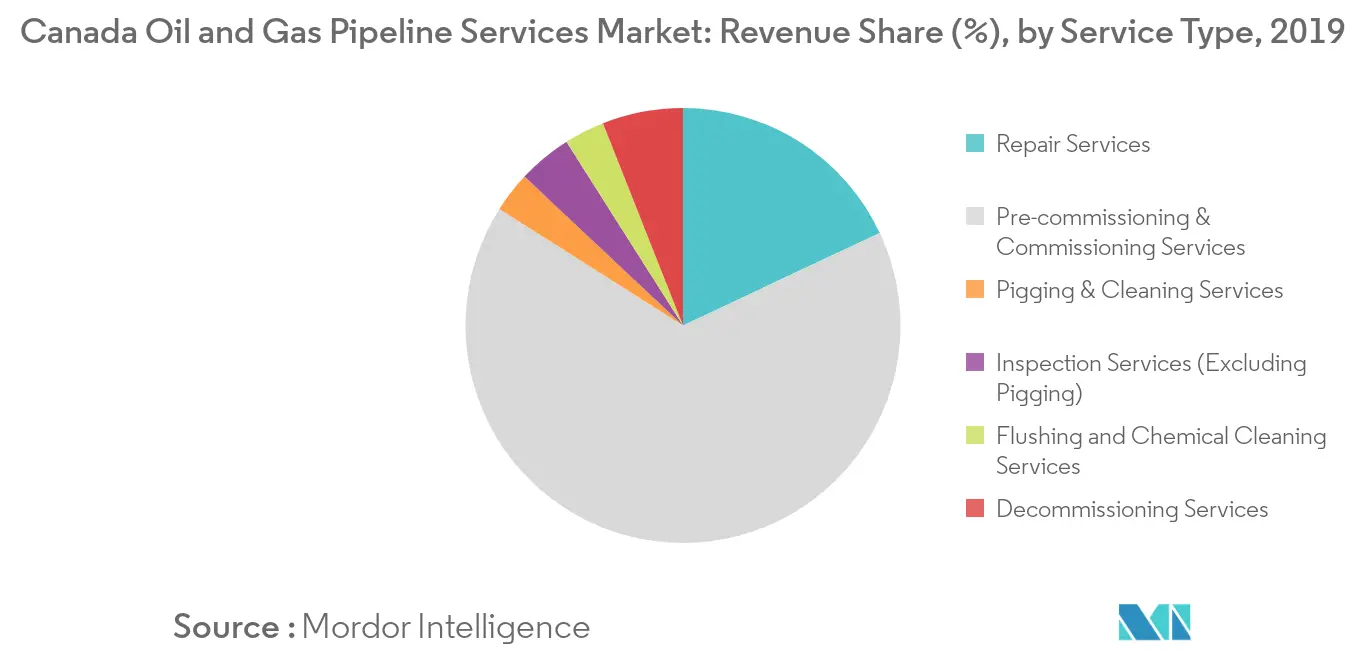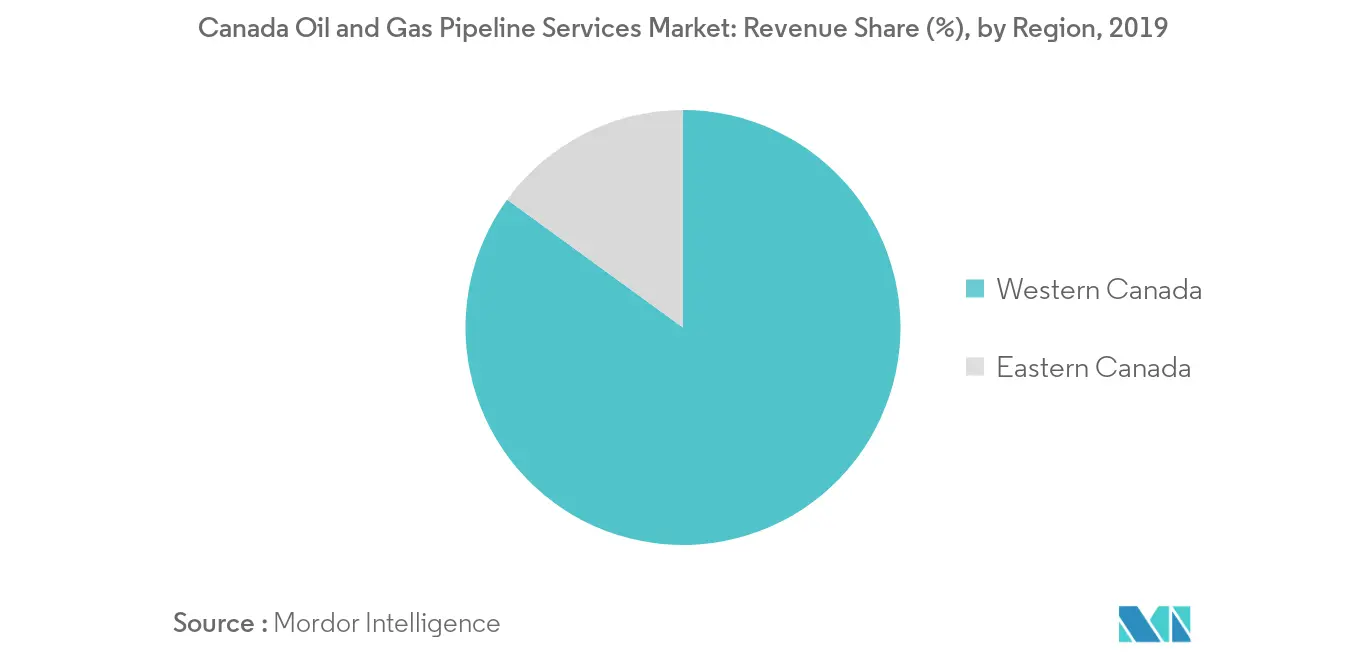Market Trends of Canada Oil and Gas Pipeline Services Industry
This section covers the major market trends shaping the Canada Oil & Gas Pipeline Services Market according to our research experts:
Increasing Demand for Repair Services
- Among the service type, repair services account for the largest market share, followed by drying and inspection services. The presence of a significant network of aging pipelines has been driving the demand for repair services, such as corrosion prevention.
- The repair and maintenance services include hot tapping, repair clamp, strap clamp, leak repair, and pipe lifting and handling services.
- Canada is witnessing an increasing demand for natural gas, particularly in the power sector. Any disruption in the gas supply can cause disruption in power generation, which, in turn, can affect gas suppliers, power industry, along with the manufacturing sector, in a region. Therefore, with a rising share of gas consumption, the demand for hot tapping from the gas pipeline operators in the region, is expected to grow substantially during the forecast period.
- Other repair and maintenance services are mainly used for repairing or replacing the damaged pipelines. The requirement of these services is generally unplanned. Moreover, the major consumer for these services is the aging pipeline network as the aging pipelines are more prone to unplanned damages.
- Moreover, as a significant fraction of the Canadian pipeline infrastructure is quite old, the probability of unplanned servicing requirement is pretty high, which is a positive indicator for the segment of the market being studied.

Western Canada to Dominate the Market
- Western Canada is the largest market mainly due to the presence of an extensive network of oil and gas pipeline across the region and beyond the borders to the US refineries. Due to strict government regulations and lack of social acceptance in the region toward crude oil pipeline the market is shifting toward the natural gas pipeline.
- Alberta and Quebec are in talks to develop a 750 km pipeline, which will carry natural gas from Alberta, across northern Ontario, and through the Abitibi region to a natural gas liquefaction complex at Port Saguenay.
- The aim is to export 11 million metric ton of LNG per year from Western Canada. The project is worth USD 13 billion and is expected to create ample opportunity for pipeline services, such as pre-commissioning and commissioning, and pigging services in the coming years.
- Surging crude oil production and limited space for export pipelines have encouraged the producers to sell the crude oil at a record low relative to world benchmark. The Government of Alberta has announced a mandatory province-wide 8.7% production cut to keep the prices from falling further.
- This is expected to allow the WCS prices to recover and encourage the investors in the long run to invest in new projects, and drive the demand for pipeline services in the coming years.
- Furthermore, the Government of Alberta is planning to build a new refinery to process the discounted crude oil, and sell the high value refined product to the international market. This is expected result in demand for the new pipeline project, and in turn, pipeline services.


